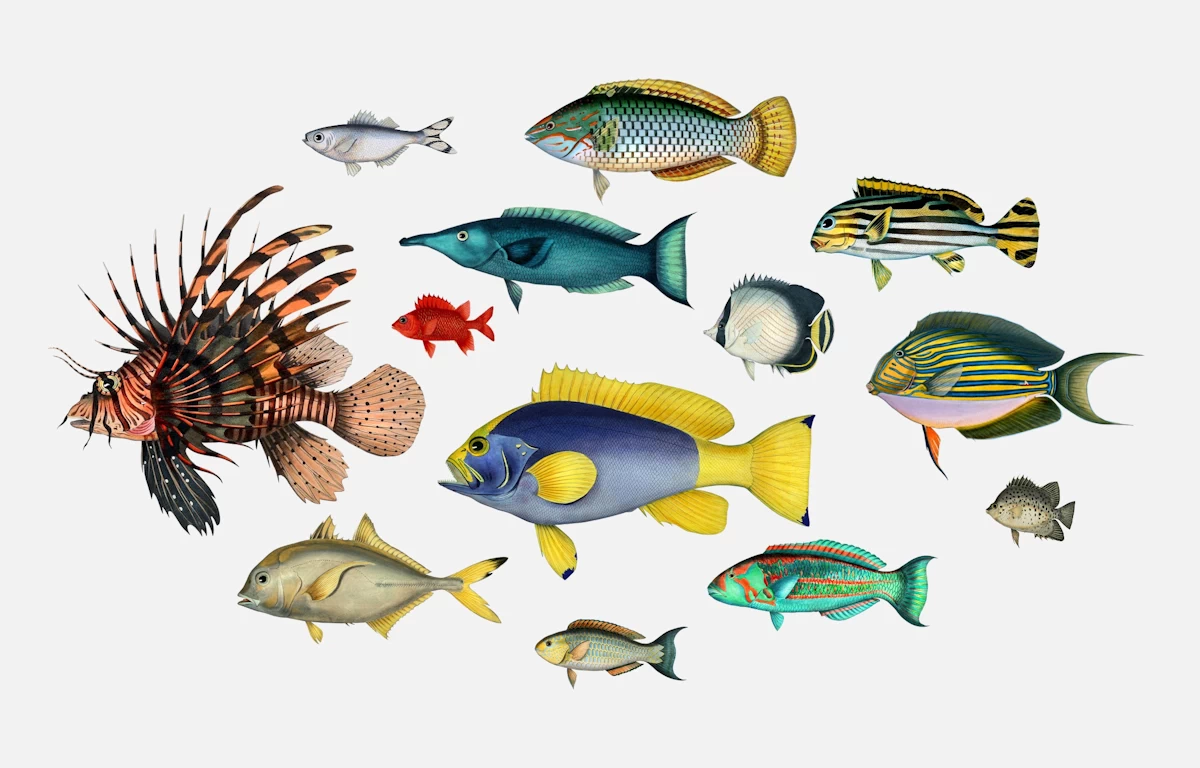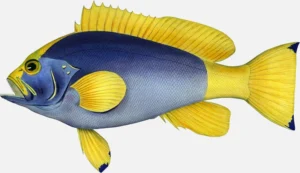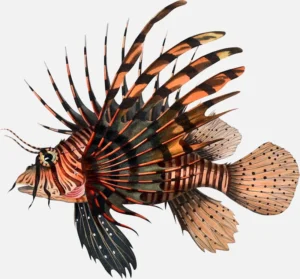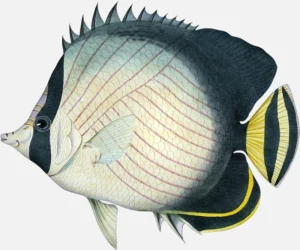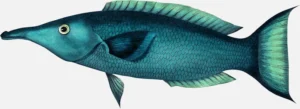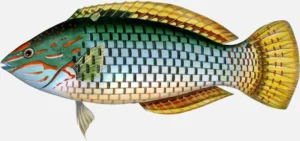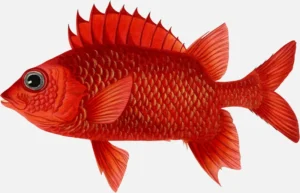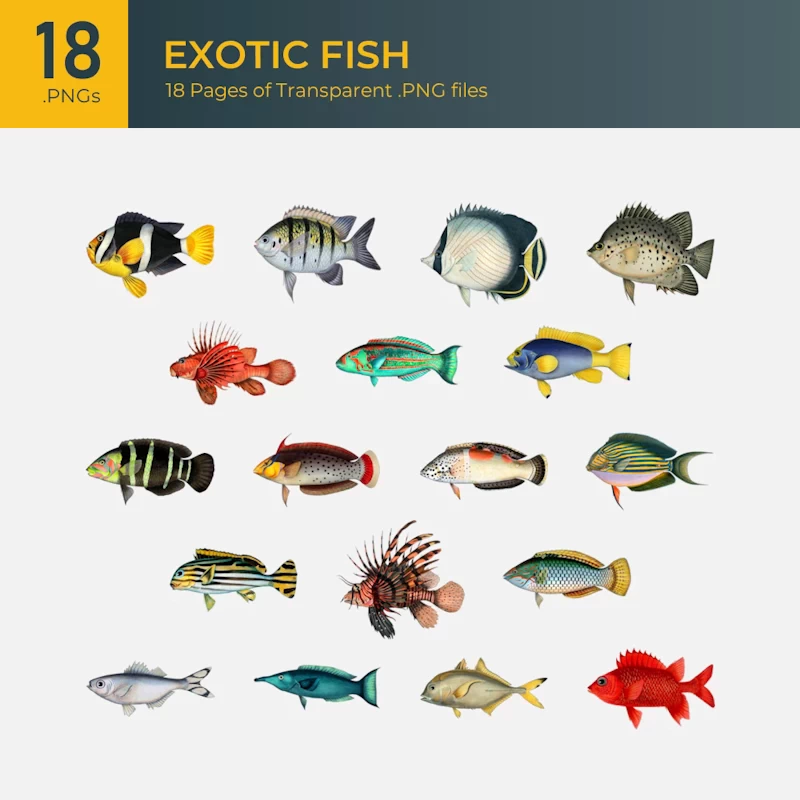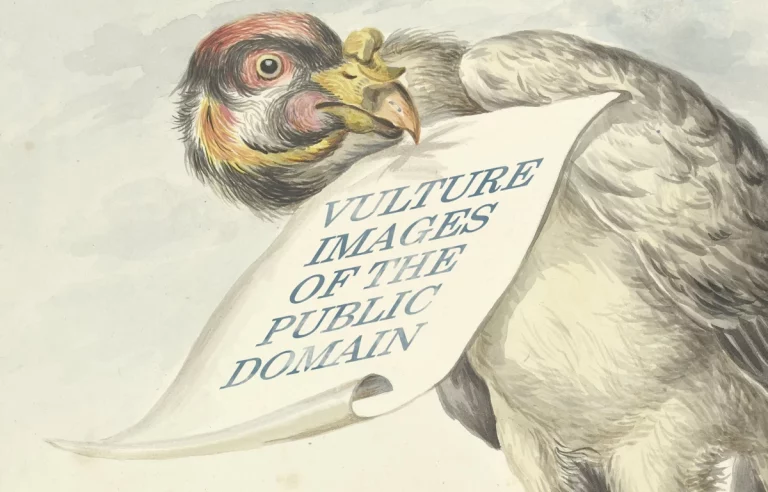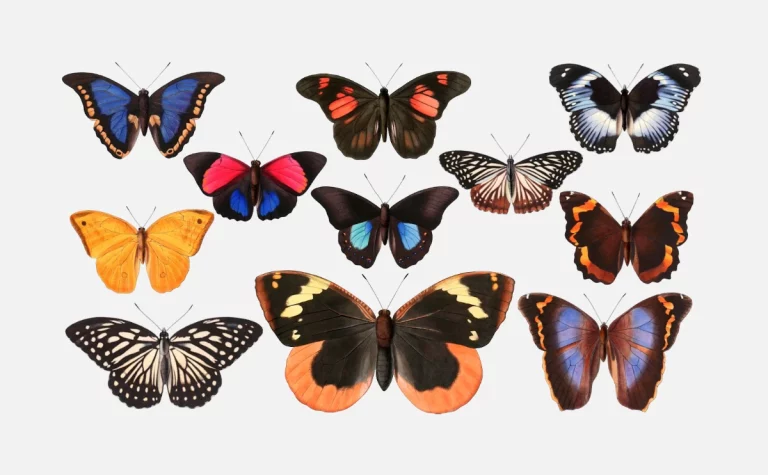John Whitchurch Bennett’s Fishy Expedition: Exploring the Fishes of Ceylon
In 1830, John Whitchurch Bennett, a British army officer, took an unexpected dive into the world of marine biology. Bennett wasn’t just any soldier stationed in Ceylon (modern-day Sri Lanka); he had a passion for documenting nature. This love culminated in his book, A Selection from the Most Remarkable and Interesting Fishes Found on the Coast of Ceylon, a groundbreaking work of art and science that introduced 30 never-before-documented fish species to the Western world.
Ceylon’s coastal waters were teeming with colorful and unusual marine life, but European scientists had little knowledge of it. Thanks to Bennett’s curiosity—and the incredible illustrations by Scottish artist John Heaviside Clark—this book became a vital resource for anyone interested in the fish of the Indian Ocean. Even today, Bennett’s second edition from 1834 can be found in the Smithsonian Libraries, serving as a historical window into the marine biodiversity of 19th-century Ceylon.
Who Was John Whitchurch Bennett?
John Whitchurch Bennett’s life was anything but predictable. Stationed in Ceylon from 1815 to 1827, he wasn’t the kind of soldier content with just doing his military duties. Instead, he spent much of his free time on the coast, documenting and sketching fish. Imagine strolling down a beach in paradise, but instead of soaking up the sun, you’re carefully observing the fish species that call the area home. That’s how Bennett rolled.
However, Bennett’s personal life was filled with ups and downs. In 1827, he lost his military post after some financial mismanagement, and he wasn’t exactly swimming in riches afterward. In fact, in 1839, he ended up in prison due to bankruptcy. Talk about rough seas. Despite these personal challenges, Bennett’s dedication to documenting marine life never wavered. His work was a passion project, fueled by his love for nature and his desire to make a contribution to science, even when life wasn’t treating him so kindly.
John Heaviside Clark: The Artist Who Brought the Fish to Life
While Bennett had the scientific know-how, he needed someone to illustrate these fish in a way that would captivate readers. Enter John Heaviside Clark, the Scottish artist with a knack for turning scientific observations into beautiful works of art. Known as “Waterloo Clark” for his illustrations of the Battle of Waterloo, Clark was no stranger to detail.
Clark had a wide range of artistic skills, from landscapes to battle scenes, but his work on Bennett’s book was particularly special. His attention to detail made each fish illustration pop off the page, showing not just the scientific features of each species, but also capturing their beauty. Bennett was so impressed that he even named one of the fish after Clark—a rare honor in the world of natural history.
Clark’s ability to bring these fish to life with vivid, lifelike colors and textures was crucial to the book’s success. It wasn’t just a scientific catalog; it was a visual celebration of the marine wonders found along the coast of Ceylon. Together, Bennett and Clark created something much bigger than a fish guide—they crafted a work of art that continues to inspire to this day.
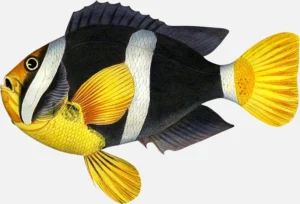
Diving Into Bennett’s Fishes: A Closer Look
Now, let’s dive into the heart of Bennett’s book: the fish themselves. Bennett documented 30 different species in his work, each one unique and fascinating. Let’s take a look at some of the standout species that caught Bennett’s eye—and later, the world’s.
The Red Lionfish (Pterois volitans)
The Red Lionfish is a showstopper. With its bold red and white stripes and long, venomous spines, it’s hard to miss. Native to the Indo-Pacific region, this fish has a bit of a bad-boy reputation thanks to its venomous spines. If you get stung, you’re in for some serious pain, and possibly nausea or breathing issues—but don’t worry, its sting is rarely fatal to humans.
What makes the Red Lionfish particularly interesting is its role as an invasive species. While it’s originally from the Indo-Pacific, it’s now wreaking havoc in the Atlantic Ocean, where it has no natural predators. In its new environment, the lionfish is gobbling up local marine life, causing big problems for native species.
The Red Lionfish is an ambush predator, meaning it sneaks up on its prey and strikes with lightning speed. They’re also pretty lazy hunters, often waiting for food to come to them instead of chasing it down.
The Vagabond Butterflyfish (Chaetodon vagabundus)
Next up is the Vagabond Butterflyfish, a fish with a name as interesting as its appearance. Also called the Crisscross Butterflyfish, this species has a striking pattern of crisscross lines on its body and a black “bandit” mask over its eyes. It’s the kind of fish you’d expect to find on a tropical postcard.
Vagabond Butterflyfish aren’t just good-looking—they’re also pretty tough. Found in coral reefs and lagoons across the Indo-Pacific, they help keep these ecosystems in check by munching on algae and tiny invertebrates. They play a key role in keeping coral reefs healthy, which is especially important given how fragile coral ecosystems can be.
Butterflyfish are romantics at heart. They typically mate for life and can often be seen swimming in pairs, sticking close to their partner as they navigate the reefs.
The Bird Wrasse (Gomphosus varius)
The Bird Wrasse is not just a pretty face; it’s also a master of disguise. With its long, beak-like snout, this fish looks like it belongs in the aviary, not the aquarium. But what makes the Bird Wrasse really fascinating is its ability to change sex. Yep, you read that right. Bird Wrasses are sequential hermaphrodites, meaning they start life as females and can later transform into males if the situation calls for it.
This fish can be found darting through coral reefs in the Indo-Pacific, using its bird-like snout to poke around coral crevices in search of food. Its ability to switch sexes helps ensure a balanced population in the reef, which is vital for maintaining a healthy ecosystem.
The Bird Wrasse’s color can change, too. As females turn into males, their bodies become more vibrantly colored, helping them stand out in the crowd (or, in this case, the reef).
The Checkerboard Wrasse (Halichoeres hortulanus)
Another species that’s all about versatility is the Checkerboard Wrasse. This fish gets its name from the distinctive black-and-white pattern on its scales, which looks like—what else?—a checkerboard. Much like the Bird Wrasse, it’s a protogynous hermaphrodite, meaning it starts life as a female and can later become a male.
Checkerboard Wrasses are found in shallow reefs, where they help keep invertebrate populations under control by snacking on small critters like crabs and sea urchins. They’re also popular in the aquarium trade thanks to their striking colors and active, curious nature.
Wrasses are known for their intelligence. They’re one of the few fish species that use tools—some wrasses have been observed using rocks to break open the shells of their prey!
The Redcoat Fish (Sargocentron rubrum)
Last but not least, let’s talk about the Redcoat Fish, also known as the Soldierfish. This nocturnal fish, with its bright red body and large, shiny eyes, is perfectly adapted for life in the dim waters of coral reefs. By day, Redcoat Fish hide in crevices to avoid predators, and by night, they come out to hunt for small crustaceans and plankton. Their large eyes help them see in low-light conditions, making them expert night hunters.
Despite their flashy red coloring, Redcoat Fish blend in surprisingly well with their surroundings. In the dim light of the ocean depths, red appears black, making them nearly invisible to predators.
Redcoat Fish get their name from their tendency to stick together in large schools, moving in formation like a well-disciplined army.
Bennett’s Legacy: More Than Just a Fish Book
Bennett’s book wasn’t just a scientific study of fish—it was a love letter to the natural world. In the 19th century, many of the species Bennett documented were entirely new to European scientists, making his work incredibly valuable. His detailed descriptions and Clark’s stunning illustrations opened the eyes of European readers to the rich biodiversity of Ceylon’s coastal waters.
At a time when natural history books were rare, Bennett’s work was groundbreaking. His writing wasn’t dry or overly technical—it was filled with a sense of wonder and curiosity about the world around him. That sense of wonder comes through even today, making his book not just a scientific resource, but an enduring work of art.
John Heaviside Clark’s Enduring Impact
Though Bennett was the one with the scientific eye, it was John Heaviside Clark’s illustrations that gave the book its lasting appeal. Clark was more than just an illustrator—he was an artist who brought scientific observations to life in vivid detail. His ability to combine accuracy with artistic flair made the fish in Bennett’s book jump off the page, showing readers the beauty of the underwater world.
Clark wasn’t just a fish illustrator, either. He had a broad portfolio, ranging from landscapes to battle scenes, and even early forms of optical illusions. His versatility as an artist made him the perfect partner for Bennett, and together, they created something that was greater than the sum of its parts.
Conclusion: A Fishy Partnership for the Ages
John Whitchurch Bennett and John Heaviside Clark’s collaboration resulted in a masterpiece that continues to inspire people nearly two centuries later. Bennett’s dedication to documenting the marine life of Ceylon and Clark’s artistic talent gave the world a glimpse into the incredible biodiversity of the Indian Ocean. Despite facing personal and financial struggles, Bennett’s passion for nature helped him create something lasting.
Together, Bennett and Clark created a fish tale for the ages—one filled with beauty, curiosity, and a sense of wonder that still resonates today. Whether you’re a marine biologist or just someone who loves a good fish story, their work is a reminder of how art and science can come together to create something truly special.


